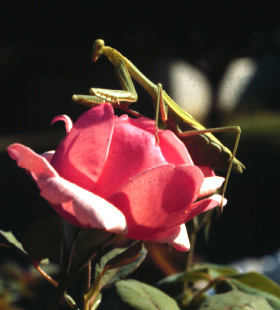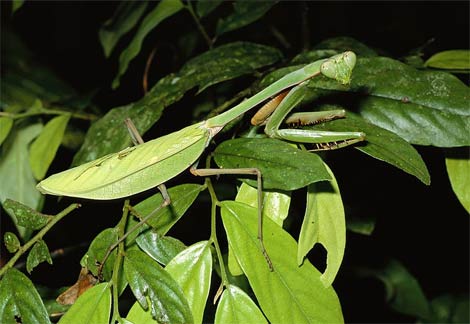|
|
Praying Mantid
|
|
Mantids eat most pest
insects. Mites and their eggs are the preferred diet of these general predators.
They also devour aphids, thrips, flies, maggots, small caterpillars,
leafhoppers, grubs and other soft-bodied insects. Mature mantids feed on larger
caterpillars, earwigs, chinch bugs, sow bugs, beetles, grasshoppers, and other
larger insects. Mantids stay in your garden and wait for an insect to walk by.
They then grab it with their strong grasping forelegs and begin munching away. Mantids range in color from bright green to brownish-gray. They are the only insects that can look over their shoulder. Mantids are well equipped for camouflage. Many have a leafy, twiggy appearance. They range in size from 3/4 " to 5 inches long. FEEDING: Mantids are predators and feed largely on other insects and invertebrates. They will eat just about anything, which means they are just as likely to eat a leafhopper as a honeybee. The smaller the mantid, the smaller the prey it eats. Most mantids need to eat at least one cricket or large bug per day. The exact number and size of the bugs a mantid needs to eat will depend upon the size of the mantid and how hungry it is. Young mantids eat small fruit flies, pinhead crickets, and other very small insects such as aphids.
|


